The causes of the appearance of red spots on the legs
Last reviewed: 23.04.2024

All iLive content is medically reviewed or fact checked to ensure as much factual accuracy as possible.
We have strict sourcing guidelines and only link to reputable media sites, academic research institutions and, whenever possible, medically peer reviewed studies. Note that the numbers in parentheses ([1], [2], etc.) are clickable links to these studies.
If you feel that any of our content is inaccurate, out-of-date, or otherwise questionable, please select it and press Ctrl + Enter.

Such a concept as spots on the skin, is used in medicine in the event that changes occur on any part of the epidermis of different shapes, hues and sizes. The causes of the appearance of red spots on the legs are associated with a variety of factors. But in any case it indicates an imbalance in the body, internal or external pathological processes.
Causes of appearance
Consider the most common causes of dermatological disorder:
- Allergy.
- Viral infections - some viral pathologies are accompanied by rashes on the skin. Against their background, the body temperature rises and overall health worsens.
- Injuries, skin damage by various substances (poisons, chemicals, burns), insect bites.
- Incorrect food.
- Violation of the hormonal background.
- Failures in the work of the nervous system (frequent stresses, experiences).
- Avitaminosis.
- Mycosis - except for red swept on the skin, the fungus causes severe itching. There may be wetting blisters, especially between the fingers.
- Varicose veins - violation of blood circulation in the legs and swelling of the peripheral veins. It is manifested by puffiness, soreness, heaviness in the joints.
- Vasculitis is an inflammation and further destruction of the walls of blood vessels due to circulatory disorders. It is accompanied by muscular articular pains, increased weakness and temperature.
- Venereal diseases - spots appear not only on the legs, but also in the groin. Most often this symptom indicates syphilis.
- Hemangioma is a benign neoplasm that leads to a wreath of blood vessels, which causes red marks on the legs.
- Pink lichen - on the body appear round or oval spots with bright red rim.
All of the above reasons require careful diagnosis and differentiation. To do this, you should consult a qualified physician who will accurately determine the cause of a local change in the color of the tissues and select the appropriate treatment to eliminate the symptom.
Pathogenesis
The mechanism of occurrence of any skin rashes completely depends on the causes of the pathological condition. The pathogenesis of red spots on the legs can be associated with a violation in the work of internal organs, hormonal failures, various allergic reactions. In some cases, frequent experiences and stresses provoke skin reactions. That is, pathogenesis is directly related to etiological factors.
If the skin becomes discolored, itching, burning and flaking, this indicates a clinical picture of a particular disease. Stains on the legs, which occur after contact with synthetic fibers or cosmetics, indicate the development of an allergic reaction. After the termination of action of an allergen the rash descends and the epidermis returns to norm. But in any case, when there are changes, you should consult a doctor.
Red spots on the toes
Many people are faced with such a problem as red spots on the toes. The appearance of this symptom is a direct indication for seeking medical help. The dermatologist will conduct a series of diagnostic examinations to determine the cause of the problem and the way it is treated.
Most often, the appearance of a red rash is associated with such factors:
- Allergic reactions
Skin changes can be small, barely noticeable or vice versa large. In most cases, they are accompanied by a symptom such as severe itching. After a while, the points turn into vesicles with fluid or pus, which indicates the attachment of a bacterial infection.
There are many reasons for the development of an allergy - food, cosmetics, clothing, household chemicals, animals. For treatment use local means, that is, gels, creams and ointments, solutions that are applied directly to the affected area. Relief occurs 1-2 hours after their application.
- Skin diseases
A bright rash on the toes, which is accompanied by itching, may indicate psoriasis. This pathology is very serious, and therefore requires medical attention. Initially, the body appears red dots, which gradually expand, towering over the epidermis. Each such speck itches and flakes off. Attempts to remove it or scratch it lead to trauma and the appearance of blood.
Completely cure this problem is impossible. But with all the medical recommendations (diet, physiotherapy, medication), you can achieve a stable remission.
- Infectious diseases
Unpleasant symptoms may indicate erysipelas. It refers to infectious disorders and arises from streptococcal pathogens. The rash is painful and causes many discomforts when walking. In addition to rashes, there is general weakness and fever.
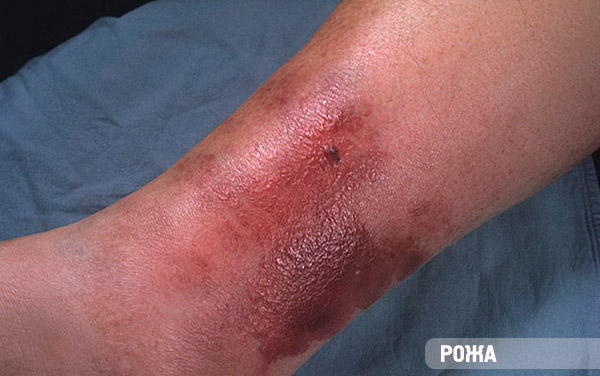
The appearance of a rash on the toes and other areas of the body can indicate measles.

Most often this disease affects children and adults with a weakened immune system. As the progression progresses, the rashes merge into large red inflamed spots. The doctor should be engaged in treatment. The patient is prescribed antibacterial and other medications. The speed of recovery depends on the stage of the disease and the individual characteristics of the patient's body.
- Metabolic Disorders
Changes in the skin can indicate metabolic disorders. If the rash from the toes gradually shifts to other parts of the body, then it speaks of hemosiderosis. The disease is associated with impaired liver function. This pathology is not life threatening, but causes aesthetic discomfort.
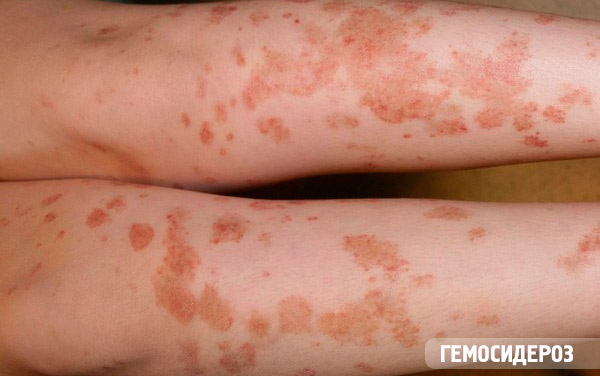
In any case, dermatological changes are a problem that requires medical attention. The earlier the causes are identified and the treatment is found, the higher the chances of avoiding various complications.
Red spots on hands and feet
The state of health is directly related to the skin condition, as in many diseases it reacts one of the first. Red spots on the arms and legs indicate the development of the pathological process. Especial danger is represented by rashes that itch, flake and cause painful sensations.
Consider the main causes of the disease state:
- Allergy
It appears as small patches, as well as large markings that capture certain areas of the body. Irritation occurs due to the ingress of allergens to the epidermis. It can be household chemicals, cosmetics, some food products, medicines, dust, wool, synthetic clothing, pollen of plants and much more. In order to determine what caused the rash, you need to seek medical help and undergo a series of diagnostic tests. For treatment, antihistamines are prescribed.
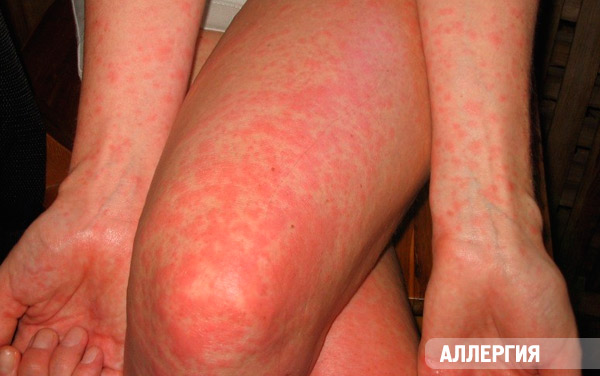
- Dermatitis
This is another type of allergic reaction. Inflammation occurs when contact with the stimulus, for example, the use of aggressive cosmetics. The treatment is aimed at eliminating the provoking factor and restoring the skin.
- Photodermatosis
An allergy to the sun is manifested by voluminous red spots on the hands, feet, face and other parts of the body. With prolonged exposure to sunlight, the rash begins to itch and flake off, blisters with liquid contents appear. Treatment consists of treating the skin with special creams with UV protection.
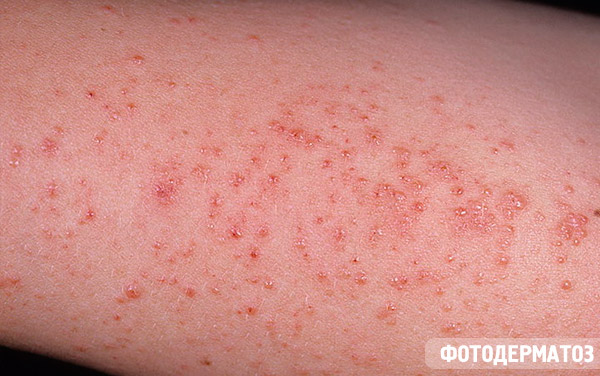
- Infections
If the rash is accompanied by an increase in temperature and a deterioration in overall well-being, then this may indicate a viral infection. Most often, this is the case with chickenpox, measles, rubella, or scarlet fever. With each kind of disorder, skin changes have their own characteristics.
- Measles is an acute infectious-viral disease. Is manifested feverish condition, inflammation of the mucous membranes of the eyes, nasopharynx and respiratory tract. On the hands and feet appear patchy-papular rashes, which gradually pass to the face and other parts of the body.
- Varicella - arises from herpes virus, refers to highly infectious infections, as transmitted by airborne droplets. In addition to the extremities, the rash also appears on other parts of the body. Patients complain of severe itching. In this case, combing can lead to tissue injury and secondary infection.

- Rubella - has blurred symptoms and can masquerade as other problems. Patients suffer from increased fatigue and weakness. Rashes oval and red.
- Scarlet fever - occurs due to streptococcal infection. It is often accompanied by a sore throat. The rash is shallow, but may merge and form dry red patches.
- Pink lichen - most often occurs in people with a weakened immune system. It appears with marks with a bright red rim. In the future, around the rashes formed a speck with a pink center and a red rim. A painful condition is accompanied by severe itching. Treatment consists of a hypoallergenic diet and antihistamines.
- Nervous experiences - in this case the rash occurs during a period of heightened emotional tension. It can be accompanied by severe itching and even burning. The pathological condition is associated with a violation of the vascular tone, that is, vegetative dysfunction.
In addition to the above reasons, dermatology has more than a hundred pathological conditions in which such symptoms occur. For diagnosis and treatment should contact a dermatologist.
Red spots on the soles of the feet
Although the feet are not visible to others, do not leave them unattended, especially if there are any rashes or other dermatological reactions. Red spots on the soles of the feet are one of the first signs of serious disorders in the body. Most often they arise because of such reasons:
- Dermatitis is an inflammatory lesion of the epidermis. The rash appears due to such factors: pressure, friction, bacteria, viruses, fungi, intoxication, metabolic disorders, solar radiation.
- Allergy - on contact with irritants (grass, dust, etc.), redness occurs, accompanied by itching.
- Mycosis - fungal infection develops due to non-observance of personal hygiene, when walking barefoot in public places (swimming pool, sauna, dressing room), as well as when wearing someone else's shoes. The predisposing factor is increased sweating of the feet, flat feet, diabetes mellitus and weakened immunity.
- Hemangioma - is a benign neoplasm from the vascular membranes. At the initial stage of this disease on the body, including on the soles of the feet, red dots of irregular shape are formed.
- Varicose veins - manifested not only by swelling of the veins, swelling and stagnation of blood in the lower limbs, but also by rashes on the feet.
- Diabetes mellitus is an endocrine disorder in which all body structures suffer. This is especially noticeable on the lower limbs. It is possible to develop the syndrome of diabetic foot, when the sole of the legs acquires a dark maroon color due to poor nutrition of the skin.
- Diseases of the gastrointestinal tract - even a small spot on the leg can signal violations with digestion. If redness occupies a large area of the foot, then this indicates a dysbacteriosis of the intestine.
- Bedsores - represent a violation of the integrity of the epidermis, subcutaneous tissue and muscle tissue. Developed because of prolonged compression of soft tissues. Similar is observed in bedridden patients. At the initial stage, the disorder manifests itself in hyperemic areas that can go into ulcers.
- Avitaminosis and malnutrition - eating harmful foods (fried, fatty, spicy, sweet, salty), leads to skin problems, including on the feet. With avitaminosis, that is, the deficiency of nutrients in the body, the same symptoms are observed.
- Vegetative disorders - are associated with long-term stress, increased physical or mental stress. In this case, the organism includes an adaptation mechanism that leads to the expansion of small capillaries. This is manifested by local areas of redness.
- Viruses - changes in the skin of the feet are observed with rubella, chicken pox and other viral lesions. Similar symptoms are typical for ARVI.
In addition to the above reasons, skin disorders are possible with the action of various stimuli. These can be mechanical, chemical or physical factors that cause an inflammatory response. For example, burns, frostbite, aggressive substances in cosmetics, wearing uncomfortable or tight shoes.
Red spots on the lower leg and calves of the legs
The appearance on the body of any rash is a rather alarming symptom that requires medical attention. Red spots on the shins and calves of the feet are most often associated with such causes:
- Diabetes.
- Hormonal disorders.
- Vasculitis.
- Lichen.
- Allergic reactions.
- Fungal infections.
- Hepatitis.
- Venous hyperemia.
- Various injuries and insect bites.
- Hemangioma.
If the changes are accompanied by painful sensations when pressing on them, then this may indicate metabolic disturbances or disorders of the digestive system. If the rash is peeling, then maybe it's pink lichen.
Very often, the hyperemia of the skin on the lower leg and calves of the legs is an allergic reaction. Bubbles with liquid or dry patches and crusts form on their background. In any case, this symptom requires a thorough diagnosis, as it can indicate quite serious problems with the body.
Red spots on the joints of the legs
Everyone at least once in life, but faced with such a problem as a rash on the body. Red spots on the joints of the legs are rare, so cause panic. And this is not surprising, since the causes of this symptom can be dangerous for the body.
More often the pathological condition is connected with such factors:
- Atopic dermatitis or eczema.
- Mycosis.
- Lichen.
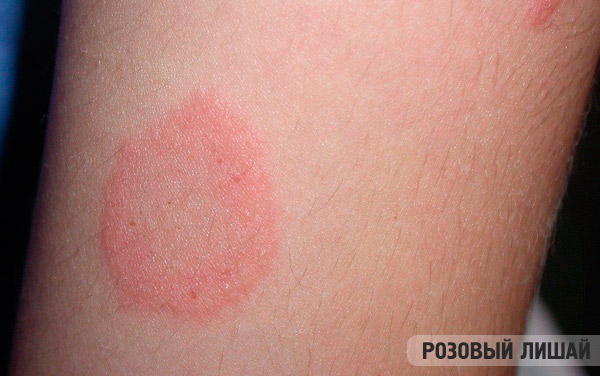
- Varicose veins (initial stage).
- Diabetes.
- Hemangioma.
- Scleroderma.
- Psoriasis.
The most innocuous cause is irritation. This is observed when wearing synthetic clothing (pantyhose, socks), using cosmetics (creams, lotions) or a shaving machine. In addition to the rash, slight itching and flaking are possible.
A more serious cause of the disorder is arthritis and gout. In addition to skin changes, there is an increased soreness of the big toes and feet. Joints strongly swell, any touch to them causes severe pain. Such symptoms are also characteristic of acute phlebitis. With thrombophlebitis, the temperature in the rash area is increased and there is a slight itch.
Red spots on the legs and buttocks
Such a symptom as red spots on the legs and buttocks is characteristic not only for allergic reactions, but also for vasculitis. Let us consider in more detail the second cause of skin changes.
Vasculitis is a condition in which the vessels are affected. Most often, people under 20 years of age face this pathology, but in some cases it is diagnosed at an earlier age. It is believed that the development of the disease is directly related to a predisposition to allergic reactions. The main causes of vasculitis are:
- Infectious lesions, bacteria and viruses (herpes, influenza, respiratory diseases, helminths, trichomonads, streptococci and staphylococci).
- Reception of medicines.
- Insect bites.
- Food allergy.
- Subcooling.
- Burn disease.
- Vaccination and serums.
The risk factor for the appearance of rash are: a tendency to atopic dermatitis, frequent infections, pregnancy, advanced age. Vasculitis has several degrees (small, medium and high), depending on the severity of the symptoms.
As for the symptoms, the disease begins acutely. The body temperature rises sharply, and signs of a respiratory infection appear. After a while on the legs and buttocks, red areas are formed, possibly joint damage and abdominal syndrome. It is the localization of spots on the skin that allows you to suspect vasculitis.
The treatment is provided by a rheumatologist, dermatologist and other specialists. At the first stage, the patient is assigned enterosorbents (remove toxins from the body), disaggregant drugs and anticoagulants (improve microcirculation) and antibiotics. If necessary, and symptomatic therapy, the use of local medications to eliminate the rash.
Red spots on the abdomen and legs
Such a symptom as red spots on the abdomen and legs often occurs due to such reasons:
- Various allergic reactions.
- Infectious diseases (rubella, scabies, scarlet fever).
- Pathology of the digestive tract.
- Metabolic disorders.
- Disturbances of the nervous system.
- Disorders of the endocrine system.
Taking various medications can cause hives. One of her symptoms is a rash on the abdomen and legs. Similar is observed with insect bites, the use of allergenic products. The disorder occurs because of liver, kidney and even helminthic infections. In some cases, the rash becomes itchy blisters with fluid. When combing and traumatizing, there is a risk of secondary infection.
Spots appear with such an infectious lesion as lichen. The rash has the shape of coins with clearly defined edges. Inside it are small bubbles filled with liquid or pus. Lichen markings strongly itch, causing increased discomfort. Similar symptoms are characterized by erythema of infectious origin. When it progresses, the rashes merge, forming extensive epidermal lesions. Determine what exactly caused the pathological symptoms is possible only with a comprehensive diagnosis.
Temperature and red spots on the legs
As a rule, it is infectious diseases that are the main cause, the appearance of such symptoms as temperature and red spots on the legs. In this pathological condition does not necessarily immediately manifest itself, it can occur on 2-4 days after the onset of the disease.
Let's consider the basic pathologies for which the rise in temperature and a rash on a body is characteristic:
- Rubella - the first symptom of this disease is a rash. It can appear not only on the legs, but also on other parts of the body. On its background, the temperature rises and overall health worsens.
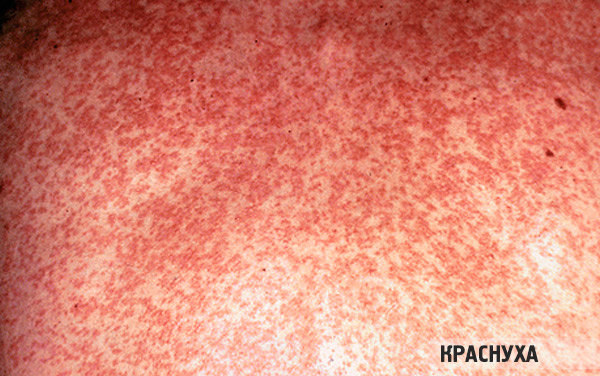
- Measles - at first the patient suffers from high fever, coughing, stuffy nose and increased tear. Very often such symptoms are mistaken for a flu-like infection. But on 2-3 day there are red rashes. And with their appearance, the temperature begins to drop.
- Varicella - in most cases, the rash does not have a specific localization. Changes can be seen not only on the feet, but also in the language. A couple of hours after the appearance, the rash increases in size and is filled with fluid. As the infection is eliminated, the vesicles dry up and the temperature returns to normal.
- Scarlet fever - besides the temperature and rash, there is a strong itching. Stains can spread throughout the body, leaving a clean zone above the upper lip and in the chin area - the so-called scarlet latin triangle
- Roseola - usually occurs in newborns. The baby rises sharply, which decreases by 2-3 days. Instead, red dots appear on the limbs.
- Allergy - fever and changes in skin are associated with the penetration of the allergen into the body. Against this background, there may be additional pathological symptoms, for example, cough or runny nose.
In addition to the above reasons, painful symptoms can be associated with non-compliance with hygiene, diseases of the circulatory system or parasitic infestations.


 [
[